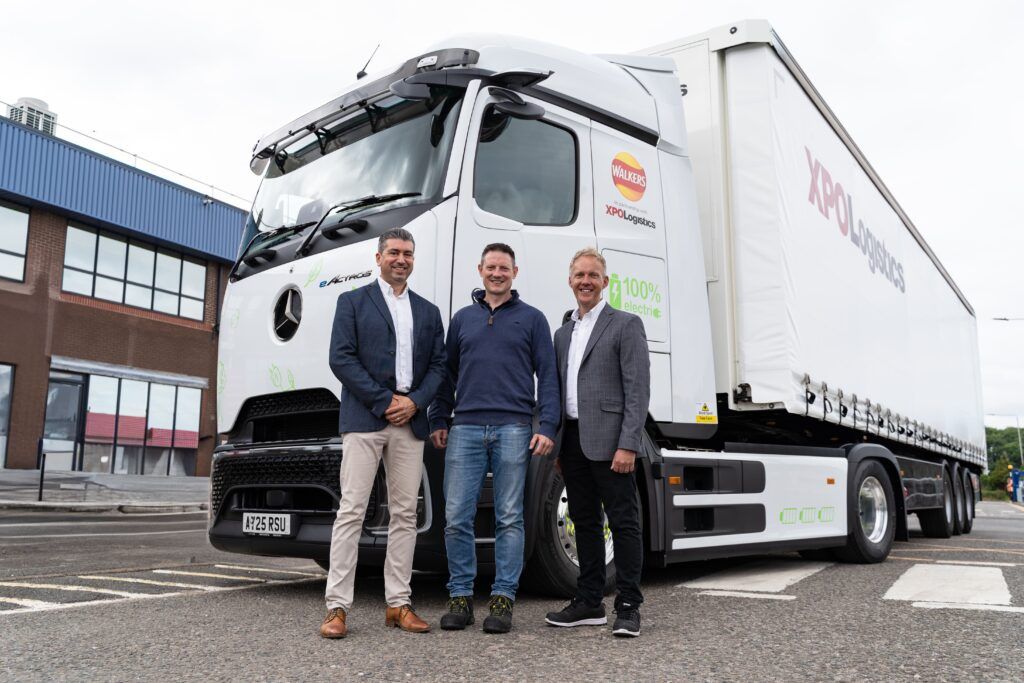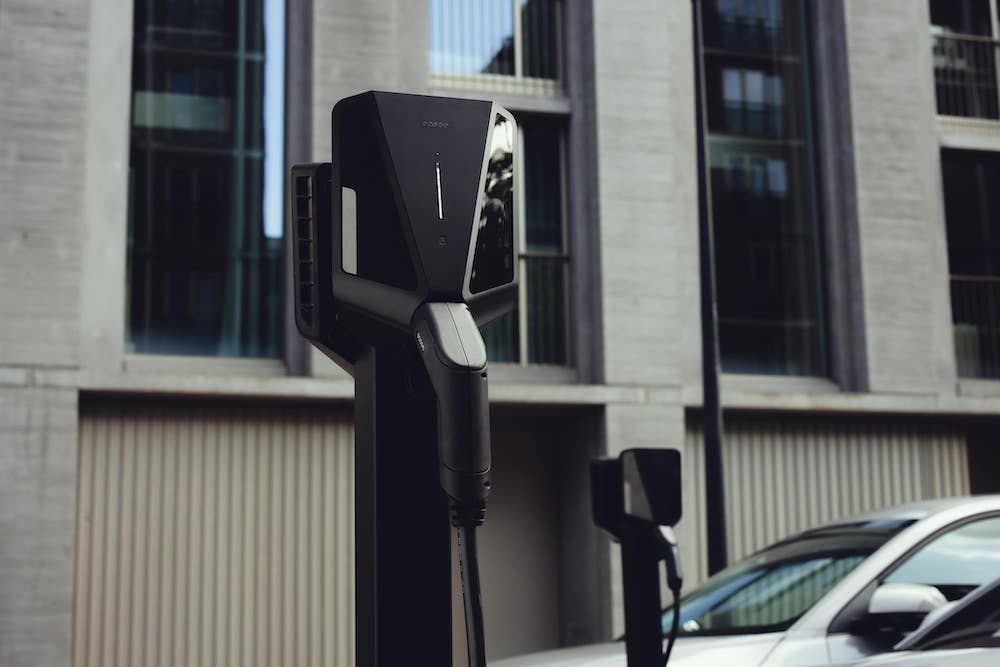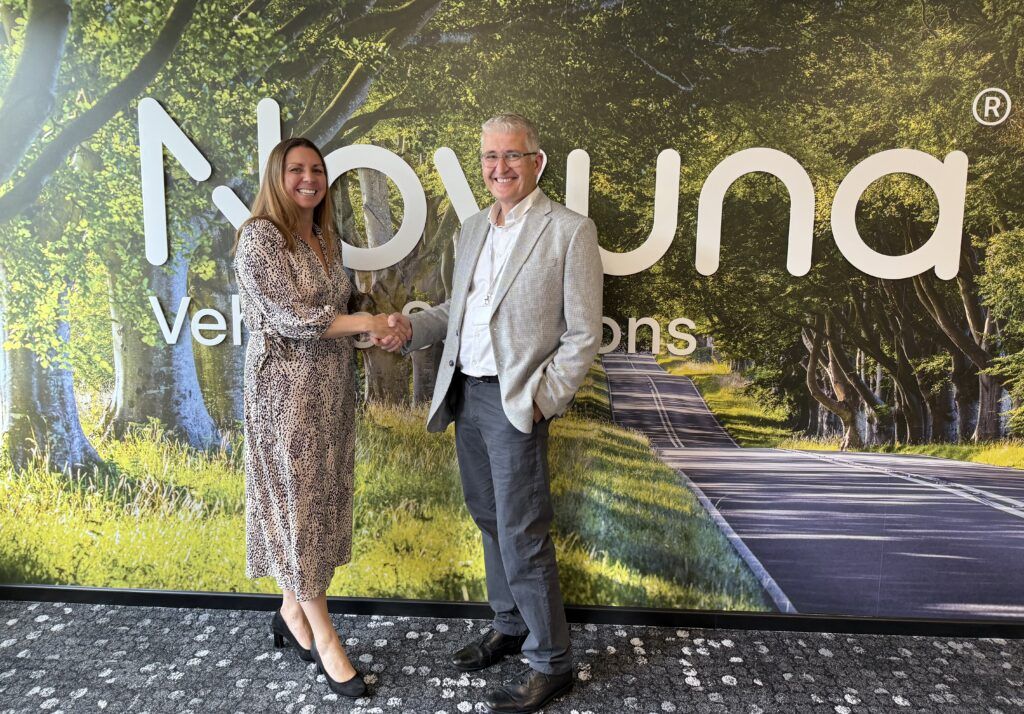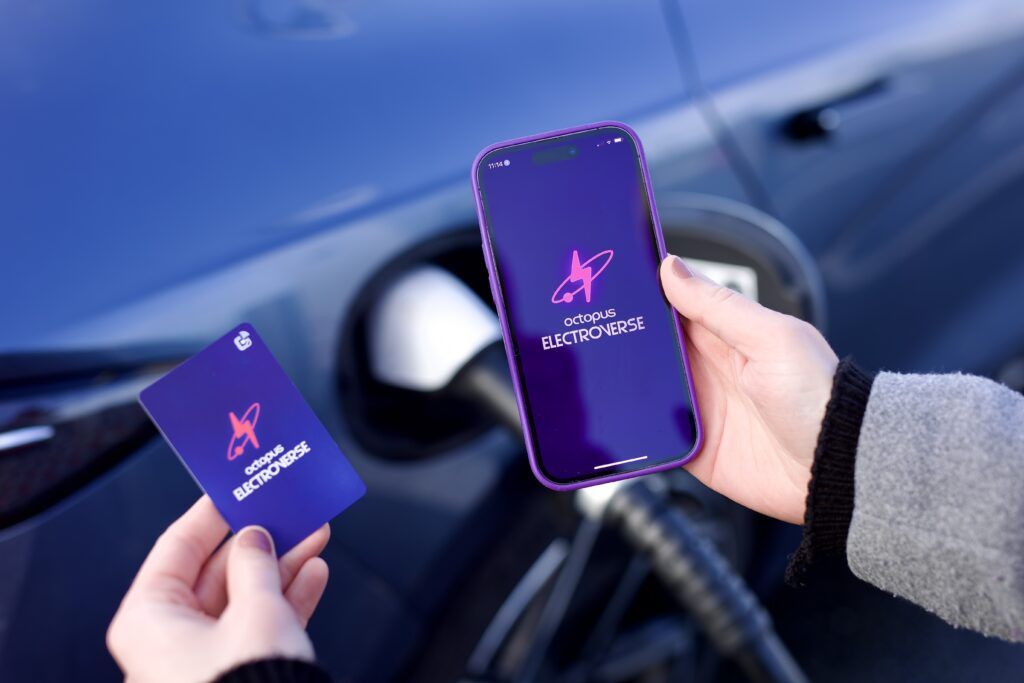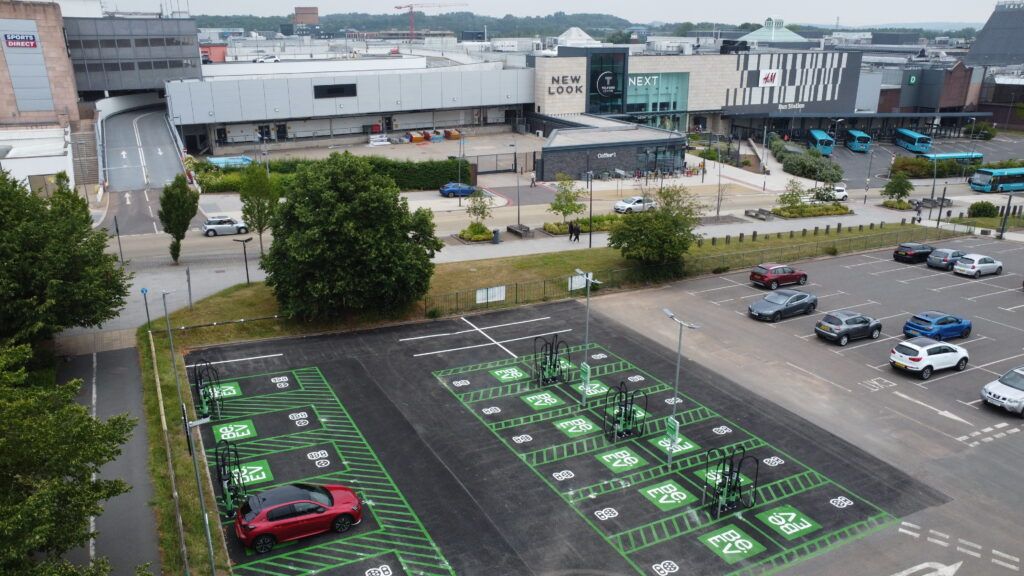Russell Fowler is Senior Project Manager for Transport Decarbonisation at National Grid. Here, he speaks exclusively to Transport and Energy about the company’s vital role in supporting the transition to clean transport across all modes and covering all sectors, including freight, rail, bus, maritime and aviation.
National Grid has a pivotal role in the UK energy industry, transporting energy from producers to local network operators, who bring gas and electricity into homes and businesses. National Grid is getting ready for a net-zero future by upgrading to cleaner, greener and more affordable energy. This, however, requires significant upgrades to the energy infrastructure to reliably meet increased demand. The upgrades needed are set to create exciting new opportunities to invest in new skills, smart technology and the best of British engineering and innovation to power our homes, travel and work right across the UK.
One big reason for upgrading the infrastructure is the rollout of electric vehicles, which continues to pick up pace with the demand for power increasing all the time.
Fowler, who has worked at Grid in a variety of roles since 2012, is the first to acknowledge that there are many barriers that still need to be overcome.
He tells me that when the company started to look at transport decarbonisation it became clear that there would be a need for a network of rapid chargers for EVs, in the same way as we have petrol stations for ICE vehicles. With concerns over range anxiety and whether or not you can go on long journeys in electric vehicles, Fowler says this remains a top priority. National Grid supports the Government’s Project Rapid, which is looking to tackle these challenges by creating a network of ultra-fast charging stations at motorway service areas and major A-roads.
“It is clear to us that you need investment upfront,” states Fowler. “If not, you can get stuck in a vicious circle where you can’t build a network of rapid chargers commercially without a fleet of electric vehicles to fund it, and then charge off of it, and finally pay for it.
“We know from all the research that’s out there, and our own research, that people won’t mass adopt electric vehicles unless there’s a network (of rapid chargers). You need infrastructure, ahead or at the same time as the need for decarbonised transport. So, as an example, if you’re a fleet owner and wanted to move all of your vehicles to electric or hydrogen, you’re going to need confidence that infrastructure is there upfront. And the next discussion is, well, how’s that going to be funded? What’s the balance between the customer, the consumer, the taxpayer, and the energy bill payer? I feel that that’s a debate that you’re going to have with each form of transport. The balance of who exactly pays is going to be slightly different depending on the transport mode.”
Confidence and continuity
According to Fowler, investment ahead of need will be key to driving the sector forward. During our conversation he remarks that it is vital that both the transport and energy sectors work closely together.
“If you’re putting in a lot of EV charging points in one place you need to make sure that the electricity grid is ready for that. Like everything in terms of infrastructure investment, it needs to know what is coming and when, so it can make that investment in time. So, it’s important that energy knows what the transport sector is doing.
“It means you can plan that infrastructure in and make sure it is ready. So, when the transport comes along, the energy infrastructure is ideally ready ahead of need.
“If the energy sector decides on its own to build lots of network, or just to build connections here and there, you risk a little bit of inefficiency. You need coordination across the two and to be aware of the timelines on both sides.”
Fowler says this has been a key area of focus for Grid over the last three to four years with the company building up key relationships on both sides.
“Both industries have previously had no reason to be heavily involved with each other. I think the only exception to that is rail and rail electrification. When you think about the roads sector they’ve had no real reason to want to talk to the energy industry. Bizarrely the only time the transport and energy sectors would ever interact was when a pylon would be going over a road. So, there were those kinds of relationships, but they’re not the kind of strategic relationships that we’re talking about here. Like with anything you have to build a new relationship and it’s always about finding out who are the best people to work with? Who are the ones who are the influencers, who are leaders in the various sectors that you want to talk to? That’s a piece of work that we’ve been doing.
“We need to get to a point where it becomes almost business as usual that the transport and energy sectors talk to each other. If you are thinking of a big transport infrastructure investment then the energy system needs to be considered from day one.”
Talking transport
National Grid recently hosted an industry roundtable, which was co-chaired by Transport + Energy, in an effort to gain further insights from across the road and rail sectors on the future of transport. This event highlighted views on the following: opportunities to decarbonise different forms or transport; the main challenges to decarbonise and how to overcome them; importance of transport and energy industries working together; role of National Grid and energy networks in transport decarbonisation.
“We’ve focused a lot on electric vehicles and wanted to broaden out our thinking,” remarked Russell. The event featured two senior National Grid directors.
Whilst some of the frustrations around connecting to the electricity system were expected, Russell admits that he was given an insight into some of the barriers faced by the HGV sector.
One of the key findings was that in order to overcome technology barriers, the Government should consider extending the scope of Project Rapid to consider HGVs, as this will ensure that the network is economic and efficient.
According to Fowler the uncertainty regarding the end technology which will act as the alternative fuel for decarbonising heavier transport, means companies are reluctant to invest. They remain concerned about risking stranded assets, particularly for HGV and specialist vehicles. In some cases, companies are hedging their bets and investing in two technologies.
This uncertainty, remarks Fowler, creates an “impasse” between Government who does not want to “pick a winner” and the industry who would ideally like technology certainty. This could ultimately risk missing targets for emissions reductions.
What was his reaction to the Government’s ban on the sale of new petrol and diesel cars and vans from 2030?
“We welcome the 2030 date,” notes Fowler. “From an electricity network transmission point of view, we’re very confident that the energy network can cope.”
An increasing number of vehicle manufacturers have now committed to moving solely to production of EVs in the next few years.
“The 2030 deadline has focused minds. You can see the statistics from sales of electric vehicles last year, when there were the lockdowns and car sales were depressed, sales of EVs were phenomenal.
“Because the date is just nine years away it’s really starting to stimulate consumers to think about it. It really helps move the debate on. We now know that they’re going to be electric from 2030 so let’s make sure that we have everything in place to be able to deliver that.”
After cars, what form of road transport will the Government turn its attention to next?
“There has been some speculation around HGVs moving to a 2040 decarbonisation date. I think with the Transport Decarbonisation Plan we’ll see some more clarity on that.”
With COP26 taking place later this year, Fowler believes there may even be pressure to bring this date forward.
In January 2019 National Grid published a report entitled ‘Supporting the growth of electric vehicles’, showing in detail how the energy networks can support the uptake of EVs by investing in a future-proofed underlying electricity grid to deliver a network of ultra-rapid EV chargers across the motorway system. From this the company have seen Project Rapid and associated £950 million funding, with the ambition to deliver 6,000 ultra-rapid chargers across the strategic road network.
Although Fowler welcomes a mixture of charging options including at home, work or the supermarket – he remains convinced that a rapid charging network is key.
“We know that not everyone can charge up at home and they need somewhere more akin to a petrol station model.”
As transport decarbonisation policy begins to address all forms of transport, Fowler believes there is the opportunity to consider ‘transport hubs’ for refuelling and recharging zero emission vehicles, which could be located around energy infrastructure to reduce costs of connecting to the electricity grid by minimising works and sharing the infrastructure assets.
Essentially a place where different forms of transport can share the same infrastructure to charge or fill up. These hubs could also include shipping ports.
The devil is in the detail
The Transport Decarbonisation Plan (TDP) aims to set out in detail what government, business and society will need to do to deliver the significant greenhouse gas (GHG) emissions reduction needed across all modes of transport, with the aim to put the UK on a pathway to achieving carbon budgets and net zero emissions across every single mode of transport by 2050.
For Fowler, it is a vital document and one that he wants to see address the right questions. At the roundtable event there was some frustration over delays in publishing the report.
“I think from our perspective it’d be great to have it quickly, but let’s make sure it is right. If that means waiting a few extra months then so be it. Let’s see a good plan and a good strategy.”
Fowler is keen for the TDP to cover all forms of transport, with the introduction of ‘transport hubs’ given due consideration.
“If you’re taking freight from road to rail, is there something that can be done there around decarbonisation, in terms of the infrastructure? I would like to see targets, milestones, the strategy behind it, and whole system thinking across both transport and energy.
“The Transport Decarbonisation Plan needs to act almost like a starting gun. What happens after that is also important as you cannot just have the plan and drop it. We then need to follow up with everyone across the industry. Hopefully they’ll be some really good industry engagement around it.”
Electrifying transport
When asked how much power is needed to cope with the electrification of transport, Fowler offers up a confident response.
“We estimate that you’d need around 100 terawatt-hours if we electrified all the cars on the road today. Total demand for the country is around 300TWh at the moment, so you’re looking at an additional third.
“It is important to reassure people reading this this that experts have been thinking about the move to zero carbon transport from an energy perspective for a number of years.”
But where is this power coming from?
“Everything is now much more energy efficient than it was a number of years ago, so it is not as if you have to find new energy,” comments Fowler.
“If you’ve got electric vehicles it is really important that you put clean energy in them. There’s no point in putting dirty energy into an electric vehicle. And this is often one of the unfounded criticisms of EVs with people saying they’re all charged up on coal power generation. If you look at the UK power system, a tiny fraction is coal. Coal will be off the system by 2024. So, what you’re looking at to replace that is huge amounts of offshore wind.”
Prime Minister Boris Johnson has set a target to quadruple offshore wind capacity to 40 gigawatts by 2030 as part of his 10 Point Plan.
“Now, if you work out how much energy you should expect from offshore wind, it’s around 100 terawatt hours,” continues Fowler, who believes that smart charging will also play an important role.
“It’s worth remembering this big bandwidth of load isn’t going to appear overnight. We’ve been planning this for decades. So, there’s no need to be concerned about where the energy is going to come from. I assure you that people are thinking about this and are working on it. It is something we will continue to do until we have full uptake of EVs.”
Finally, the importance of the work that National Grid and others are doing to decarbonise the transport and energy sectors is not something that is lost on Fowler. “We know we need to get our carbon emissions to zero by 2050. Can’t is not really an option. We cannot say it is too hard. You’re seeing different industries respond and it is possible. You need a plan, leadership, the will and the funding to be able to do it. It is difficult, but it is not impossible,” he concludes.
Quickfire questions
What is your favourite electric vehicle?
“I recently got a Tesla Model three, which is an absolutely fantastic car. I also like the Nissan Leaf which has that mass market appeal. We are looking at getting a second hand Leaf as our second car, when we need another one. With EVs there’s a second-hand market now starting to emerge and that’s great to see.”
When it comes to working arrangements, do you prefer the old normal or the new normal?
“ I think I’m like a lot of people and would say that somewhere between the two is great. I do miss interacting with people in the office where you just kind of get ideas from each other, especially with the hot desk environment that we have at National Grid. You can just sit with somebody that you don’t quite know and all of a sudden a new idea or a new contact is made. Going forward I think it is going to be a hybrid of the two. They’ll be times where you want to be in the office, you want to collaborate, and have those face-to-face conversations. But you kind of want that life balance a little bit better. If you don’t need to be in the office, why not work from home? I’m somewhere in between the two.”
What’s the biggest industry challenge?
“Climate change. But transport is a big part of the picture. The Department for Transport is looking at its Transport Decarbonisation Plan and we think that’s going to be a really key document. It has got to set out the pathways in various forms of transport and what they are going to look like, as well as the associated timelines.
I think the plan is going to create a lot of debate, questions and discussion. Then it’s going to move into how’s that going to work and who is going to pay for it?
Obviously, there’s a lot of work already happening, for example through the Office for Zero Emission Vehicles (OZEV) and Project Rapid, around deploying rapid charging and we know we need to get that out at pace.
So, there’s a part of kind of understanding the strategy. You’ve got to actually start to see infrastructure delivered. Ideally, if we could start it this year, that would be absolutely fantastic to hit some of these deadlines, because time will evaporate away if we’re not careful.”




